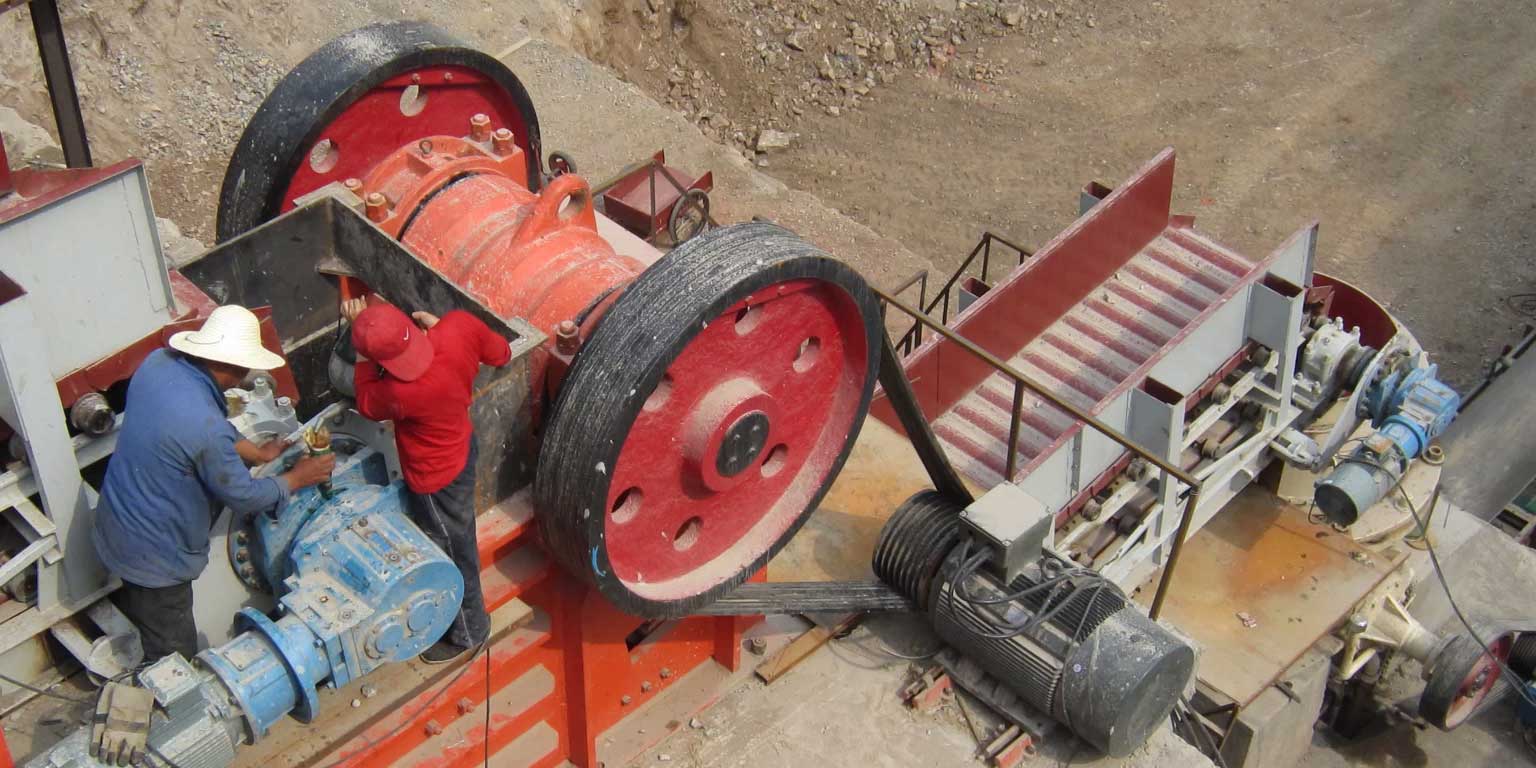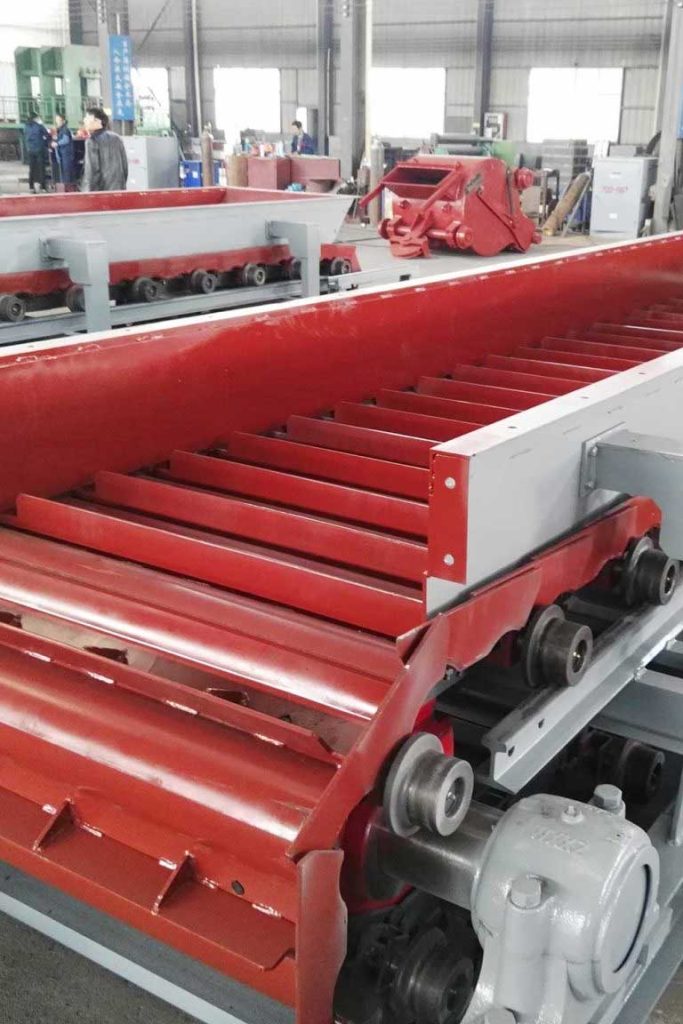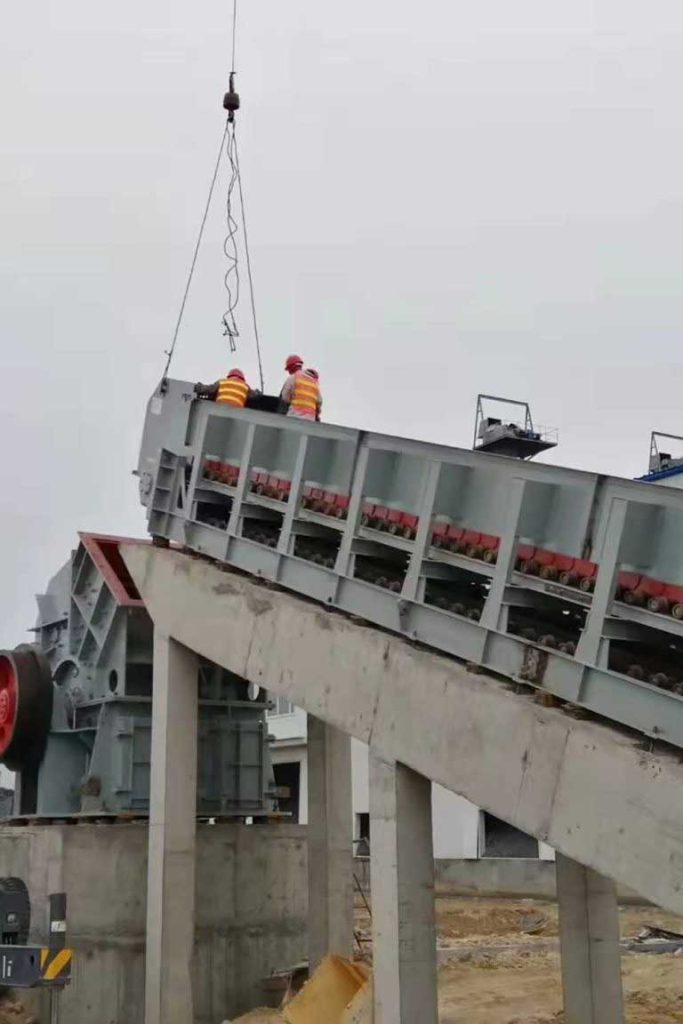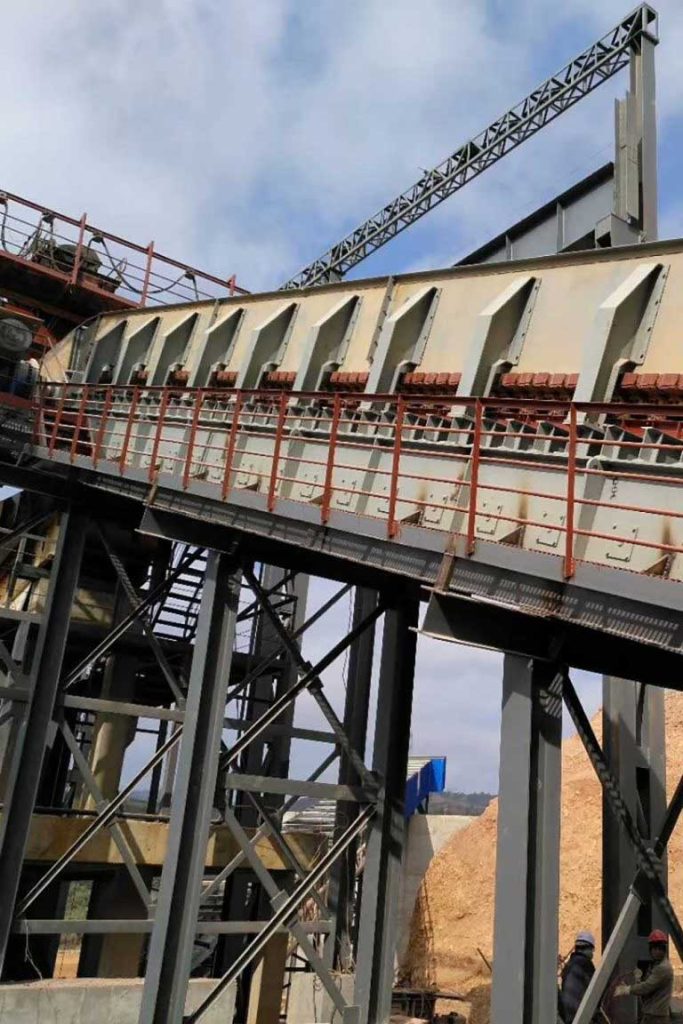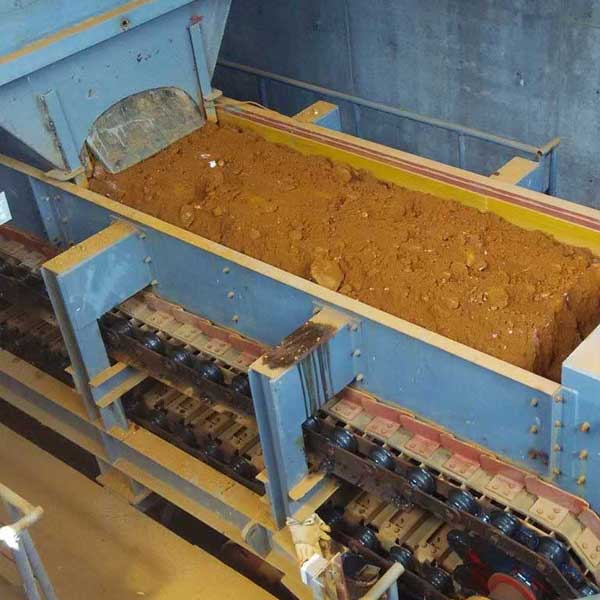Apron feeder in cement plant
The main equipment of the cement plant can be summarized as: two grinding and one burning, wherein the second grinding is raw material grinding and cement grinding respectively, and the first burning refers to the rotary kiln calcination system.
The main materials of raw material grinding are limestone, clay, and iron powder, and the materials of cement grinding are cement clinker, gypsum, and mixed materials. In order to improve the grinding efficiency, the particle size of the grinding material is usually controlled within 25mm. The particle size of unprocessed raw materials is relatively large, so the materials must be crushed before grinding.
Due to the small scale and the small number of raw materials crushed in the early cement plants, vibrating feeders were often used to feed the crushers. With the strengthening of domestic environmental protection, small cement plants were eliminated and replaced by large cement plants with a daily output of thousands of tons. In the production process, the vibrating feeder can no longer meet the requirements of large crushers, and the apron feeder has gradually replaced the vibrating feeder due to its advantages of large conveying output, stable operation, low failure rate, frequency conversion speed regulation, etc.
Read More: Guide to the Best Vibratory Feeder & Grizzly Feeder
Application of apron feeder in limestone crushing system of cement plant
Limestone is the main material of the raw material mill, and the particle size needs to be controlled within 25mm before the ball mill. Therefore, in the design of the cement plant, the crushing of the material is the first process of process, and sufficient attention should be given. Among them, the crushing of raw materials is the most important. Most of the raw materials for cement plants come from open-pit mines, and the size of ore mined in large mines can reach 1.5~1.8m. In this way, the crushing ratio required by the crushing system is in the range of ≤80.
Four design notes for the conveying capacity of the apron feeder
The following content is combined with the 3000t daily cement production line of the cement plant, how to match the apron feeder with the crusher, and give some explanations.
Delivery capacity design of apron feeder
The conveying capacity of the apron feeder needs to be matched with the output of the crusher, which is usually selected according to 1.3 to 1.5 times the output of the crusher.
Apron feeder width design
The width of the apron feeder is generally twice the maximum particle size plus 200mm, and the problem of connection with the width of the feed port of the crusher should also be considered.
Installation Angle Design of Apron Feeder
In order to reduce the length of the apron feeder and the height of the plane where the crusher is located, as well as the angle of repose of the granular material during conveying, the installation angle of the apron feeder can be selected from 20 to 23°.
The cement plant has a daily output of 3,000 tons of cement production line. The crusher selected is PCF2018 single-stage hammer crusher. The design output of the single-stage hammer crusher is 750t/h, and the design capacity of the matching heavy-duty apron feeder is 1000 t/h. Considering that the width of the PCF2018 single-stage hammer crushing feeding port is 2000mm, the width of the heavy-duty apron feeder is designed to be 2200mm. Due to the limited space of the crushing system of the cement plant, the design length of the apron feeder is 10000mm, and the installation angle is 23 °.
The basic configuration of a 2200×10000 heavy-duty apron feeder
- Slot plate width: mm 2200 (Slot plate: t=20)
- Center distance: mm 10000
- Conveying material: Limestone
- Allowable particle size: mm ≤1300
- Delivery capacity: t/h ~1200
- Conveyor inclination: ° 20
- Conveying speed m/s : ~0.12
- Tank chain: T216MB
- Motor: YVF2-280S-4-75 (variable frequency motor)
- Power: kW 75
- Reducer: P3KA22-560 (planetary right angle torque arm installation)
- Speed ratio: i 560
- Backstop: Gearbox integrated
- Installation method: right installation
- Equipment weight t: ~70
Apron Feeder
An apron feeder is mainly used to continuously and evenly supply and transfer various large heavy objects and abrasive bulk materials from storage bins or transfer funnels to crushers, batching devices, or transportation equipment.
More Detail: Apron Feeders, Everything You Need to Know, Best Guide 2023
Five Features of Apron Feeder in the Cement Plant
Heavy-duty design and components with hydraulic take-up system
A hydraulic take-up system exists in both Apron Feeder designs for cement and mining applications. The system maintains constant tension of the chains that support the turning of the rollers. The system compensates for the polygon effect and effectively protects the chain, bearings, and other components.
The Apron Feeder for cement processing features a heavy-duty roller
supports throughout the full length of the feeder and a double set of rollers in the impact area, strengthening its ability to handle the enduring process. The Apron Feeder for mining showcases cast manganese steel aprons, SALT chain components and forged alloy steel main shafts. The impact loads are absorbed by a natural material bed on top of the feeder, and in combination with heavy duty impact beams in the feeding area, the Apron Feeder is designed to handle the toughest operational conditions.
Lifetime lubricated impact rollers for cement operations
The completely automated lubrication system ensures longevity of bearings for the impact rollers on cement application Apron Feeders. This keeps maintenance and spare parts replacement costs low while also reducing energy consumption.
Raw material blending system for your cement needs
For cement applications, two Apron Feeders can be combined to form a raw material blending system. This option combines comminution and blending in one installation, saving you the hassle of having two different types of equipment, and space as well.
Delivery tailored to your requirements and mining site conditions
Depending on the size of your chosen Apron Feeder, it can be delivered to your mining site in pre-assembled major components or as a single unit.
Mining application offers tractor-type chain
For mining applications, tough components including tractor-type sealed and lubricated (SALT) chains, cast manganese steel aprons, and forged alloy steel main shafts ensure longevity.
Works Cited: Apron Feeder FLSmidth
